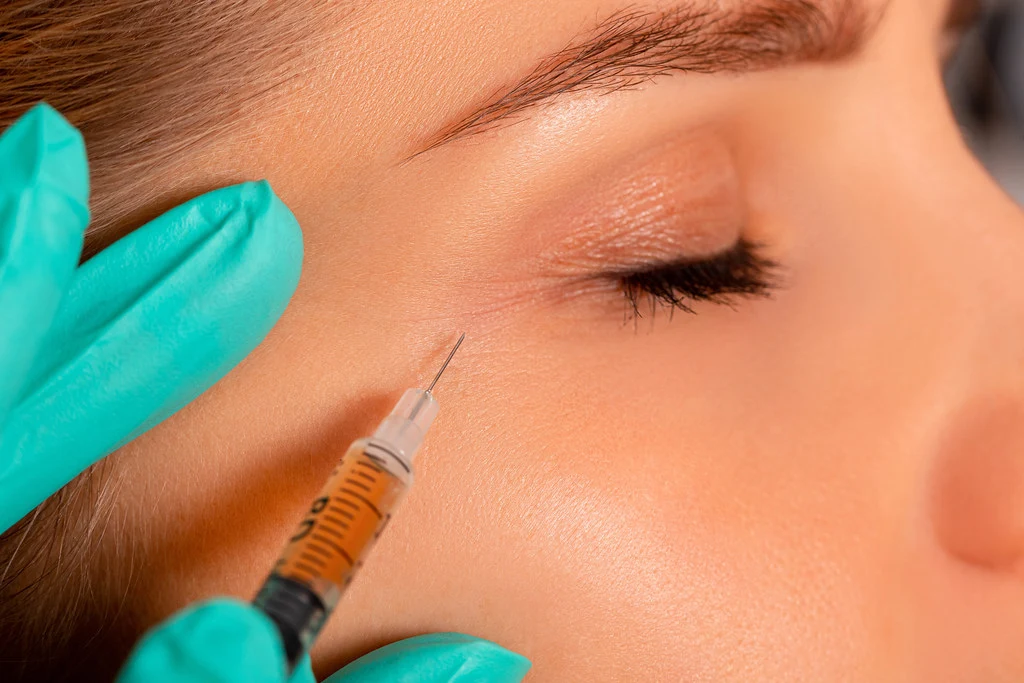
Botox vs. Dermal Fillers: Understanding the Differences and Benefits
- Published on
- Authors
-

- Author
- Michelle
-
When it comes to facial rejuvenation treatments, Botox and dermal fillers are two popular options that offer different benefits and results. Understanding the differences between these two treatments can help you make an informed decision about which option is best suited to your needs. In this article, we’ll compare and contrast Botox and dermal fillers, explaining their respective uses, mechanisms of action, target areas, and ideal candidates.
Botox: What Is It and How Does It Work?
Botox, short for botulinum toxin, is a neurotoxin derived from the bacterium Clostridium botulinum. It works by temporarily paralyzing or weakening muscles, thereby reducing the appearance of wrinkles and fine lines caused by repetitive facial expressions. Botox injections are commonly used to treat dynamic wrinkles, which are caused by muscle movement, such as forehead lines, crow’s feet, and frown lines between the eyebrows.
Uses:
- Treatment of dynamic wrinkles, such as forehead lines, crow’s feet, and frown lines
- Correction of facial asymmetry
- Reduction of excessive sweating (hyperhidrosis)
- Management of migraines and tension headaches
- Treatment of jaw clenching and teeth grinding (bruxism)
Mechanism of Action:
Botox works by blocking the release of acetylcholine, a neurotransmitter that signals muscles to contract. By temporarily inhibiting muscle contractions, Botox prevents the formation of wrinkles and smooths existing lines.
Target Areas:
- Forehead
- Glabella (area between the eyebrows)
- Crow’s feet (outer corners of the eyes)
- Bunny lines (lines on the nose)
- Chin (for dimpling or puckering)
- Masseter muscles (for jaw slimming)
Ideal Candidates:
- Individuals with dynamic wrinkles caused by muscle movement
- Those seeking a temporary solution for facial aging
- Patients looking for a minimally invasive treatment with little to no downtime
- Generally healthy adults without contraindications to Botox injections
Dermal Fillers: What Are They and How Do They Work?
Dermal fillers, also known as soft tissue fillers, are injectable gels made from hyaluronic acid or other biocompatible substances. They are used to add volume, smooth wrinkles, and enhance facial contours by filling in areas of lost volume or plumping up specific areas. Unlike Botox, which targets muscles, dermal fillers work by physically filling in wrinkles and lines or adding volume to certain facial features.
Uses:
- Augmentation of lips, cheeks, and chin
- Reduction of nasolabial folds (smile lines) and marionette lines
- Correction of under-eye hollows and tear troughs
- Improvement of facial symmetry and contours
- Rejuvenation of aging hands
Mechanism of Action:
Dermal fillers work by physically adding volume to the skin, smoothing wrinkles and folds, and restoring youthful contours. Hyaluronic acid fillers also attract and retain moisture, enhancing skin hydration and elasticity.
Target Areas:
- Lips
- Cheeks
- Nasolabial folds
- Marionette lines
- Under-eye hollows
- Chin
- Temples
Ideal Candidates:
- Individuals with static wrinkles or volume loss due to aging
- Those looking to enhance facial contours or features
- Patients seeking immediate and long-lasting results
- Generally healthy adults without contraindications to dermal filler injections
Conclusion
In summary, Botox and dermal fillers are both effective options for facial rejuvenation, but they work in different ways and target different concerns. Botox is best suited for treating dynamic wrinkles caused by muscle movement, while dermal fillers are ideal for restoring lost volume and enhancing facial contours. The choice between Botox and dermal fillers depends on your specific goals, concerns, and desired outcomes. Consulting with a qualified and experienced injector can help you determine the most suitable treatment plan for achieving your aesthetic goals.